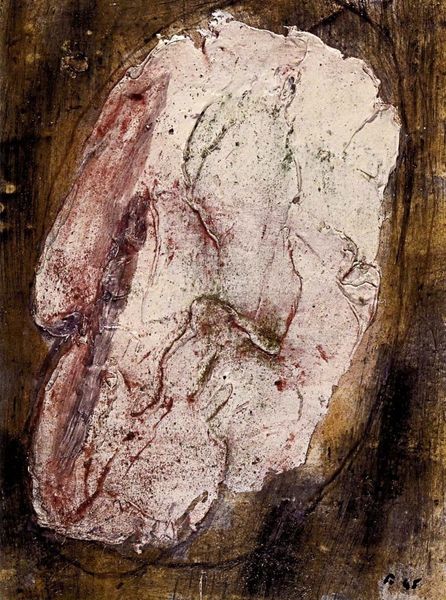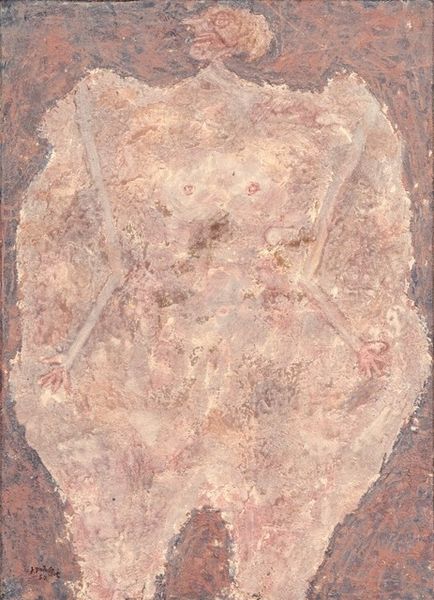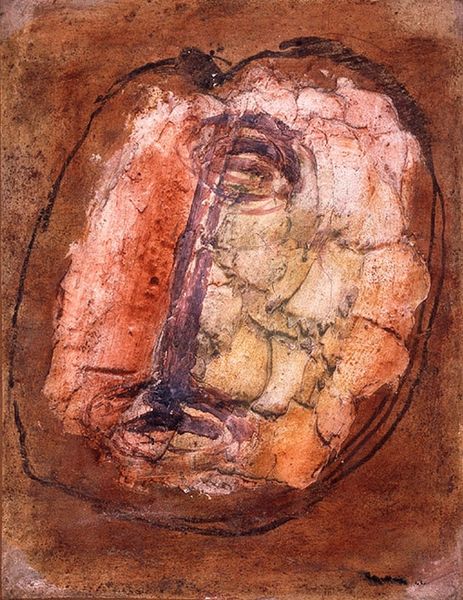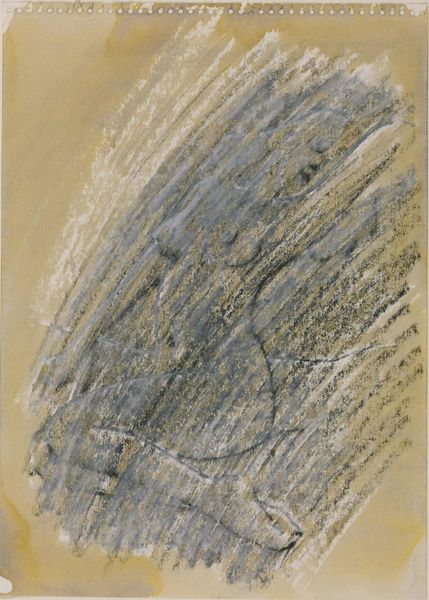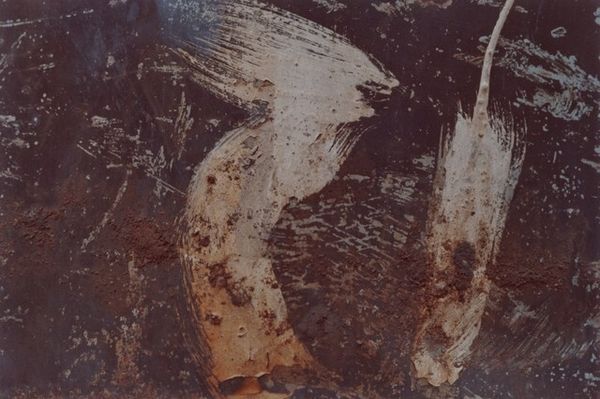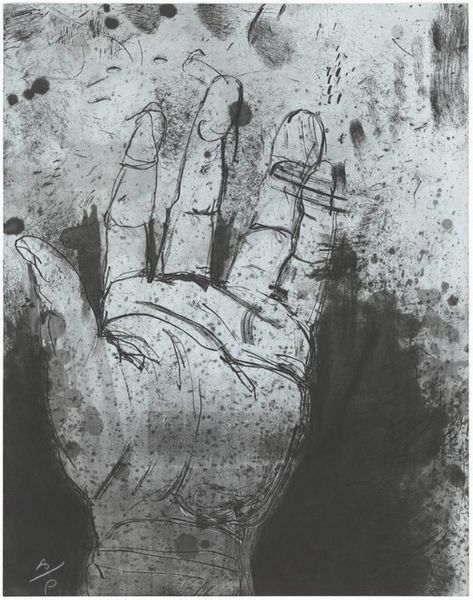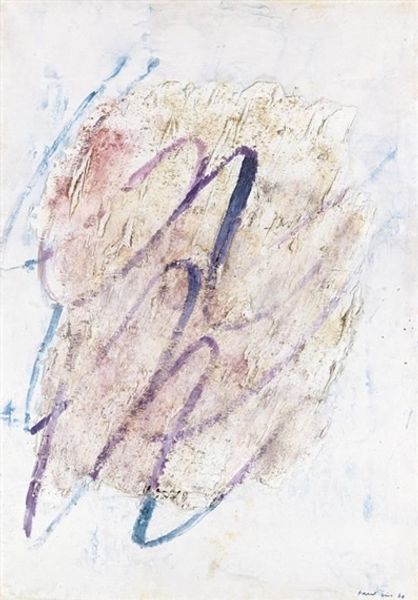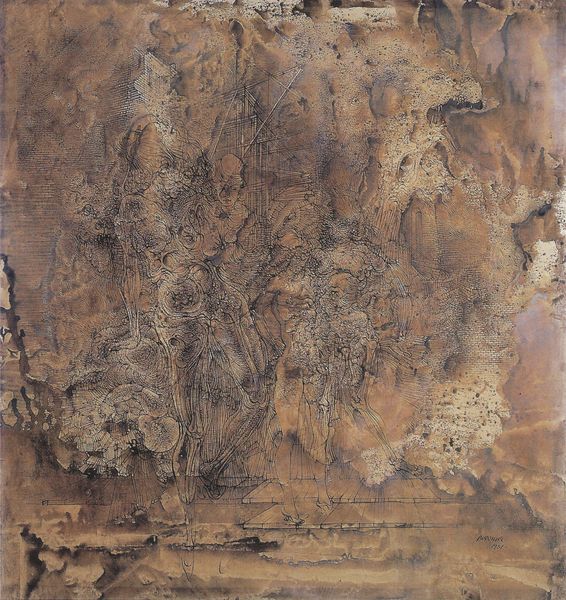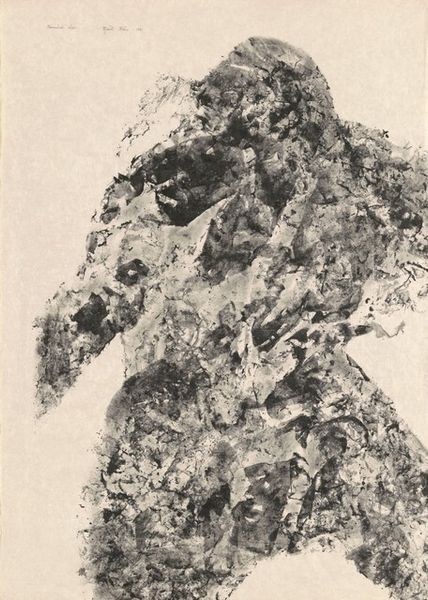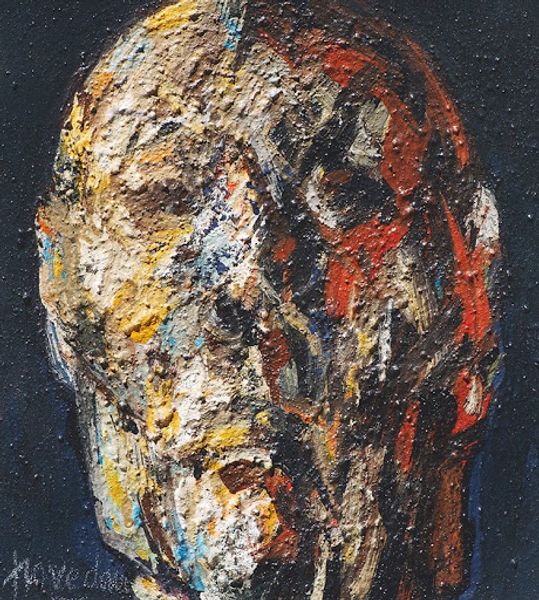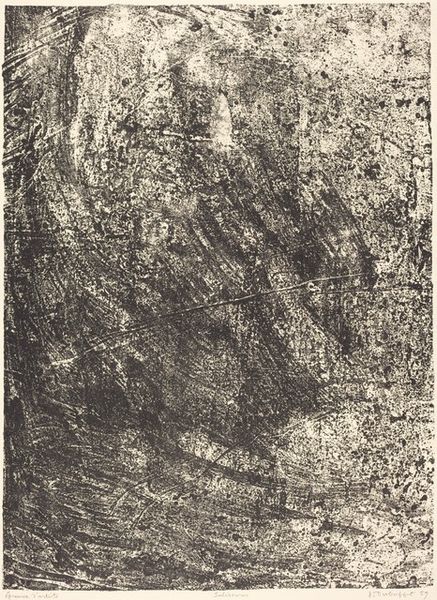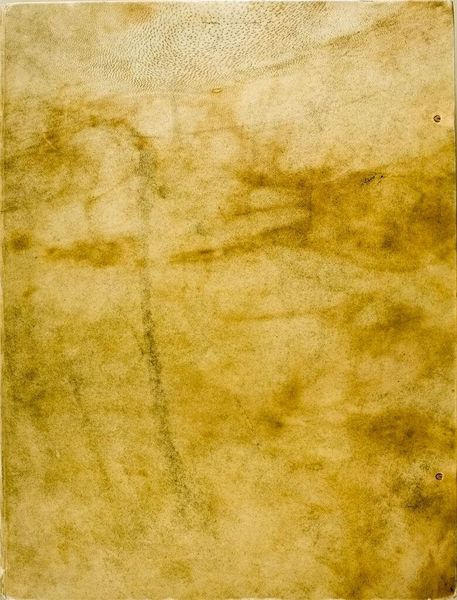
matter-painting, oil-paint, impasto
#
abstract-expressionism
#
abstract expressionism
#
matter-painting
#
oil-paint
#
impasto
#
abstraction
#
monochrome
Copyright: Jean Fautrier,Fair Use
Editor: So, here we have Jean Fautrier’s "Oradour-sur-Glane," created in 1945 using oil paint and a technique called "matter painting." It's incredibly textured, almost sculptural, and…well, somber. It evokes a real sense of devastation. What stands out to you when you look at this piece? Curator: The first thing that grabs me is that yes, it’s undeniably heavy. Fautrier was deeply affected by the atrocities of World War II, and this piece feels like a direct emotional response. The impasto is practically fighting to get off the canvas, don't you think? It's not just paint, it's like… solidified pain. And it embodies more than that one tragic village – it's about all the unseen suffering of war. Editor: It definitely feels…visceral. How does this monochrome palette play into the overall impact? Curator: The muted tones enhance the feeling of absence, of loss. Colour can be vibrant, full of life. Here, the greys and whites feel bleached, like the life has been sucked out. This is an abstract piece but you get that ghost-like, pallid quality from that one colour that’s just…gone. Don’t you think that draining colour is the right choice here? Editor: Absolutely, it strips away any potential beauty and leaves behind this stark, haunting residue. And knowing the context – that Oradour-sur-Glane was a village decimated by the Nazis – makes the abstraction all the more powerful. It’s not trying to depict anything literally; it's conveying the unspeakable. Curator: Exactly! And the "matter painting" – this almost violent application of paint – it’s like he’s attacking the canvas, trying to make sense of something senseless. Art that makes us feel… deeply. And uncomfortably, is often doing something right. Do you think that artists can shoulder such intense grief and transmute it into a compelling and immersive creative piece? Editor: It's a powerful testament to the ability of art to process trauma, both for the artist and for us as viewers. It definitely makes me think about the responsibilities that come with creating art about sensitive subjects. Curator: Right, and the profound capacity for art to remind us, challenge us, even when it's incredibly painful. Thank you for framing this experience; this made me reconsider some long-held positions.
Comments
No comments
Be the first to comment and join the conversation on the ultimate creative platform.
